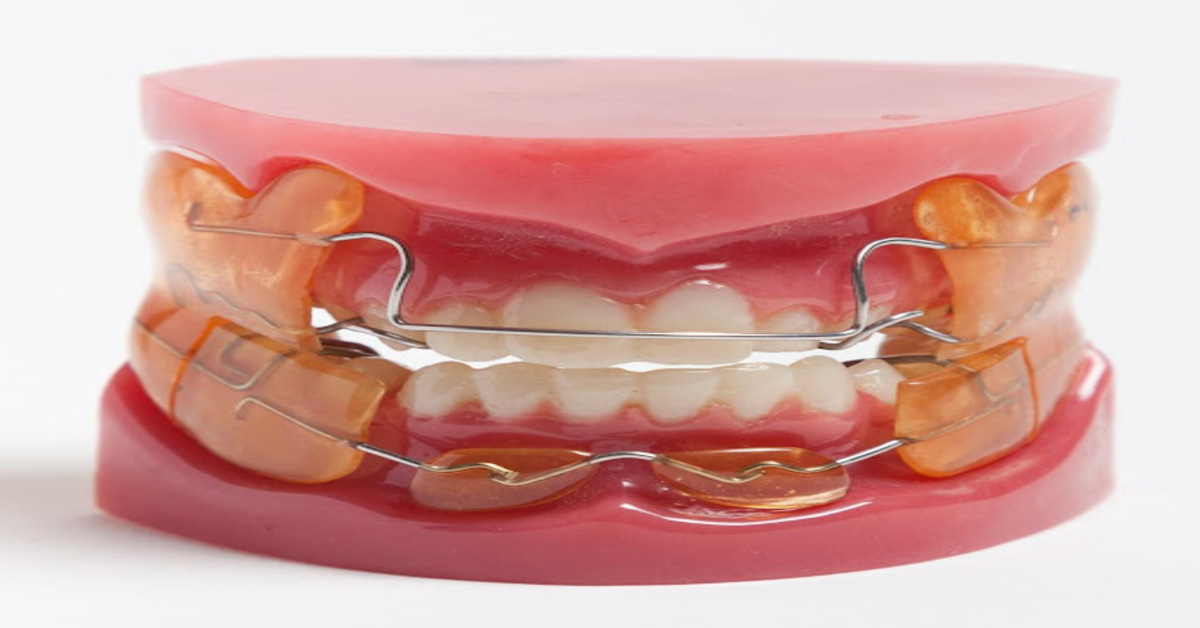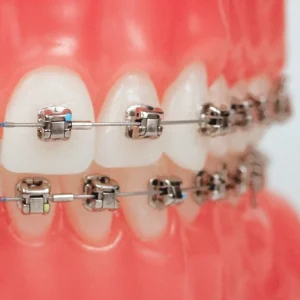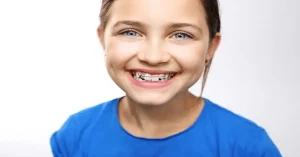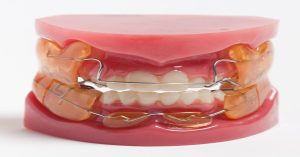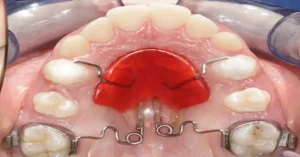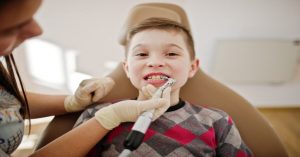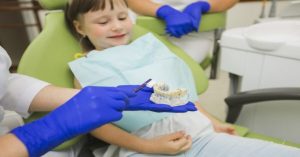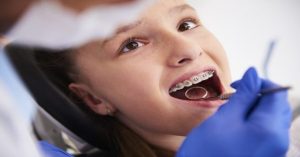- ✨ Dubai’s back-to-school period (August) provides an ideal time to begin treatment due to routines and free schedules.
- ✨ The lower jaw grows for a longer period than the upper jaw, making timing even more important.
- ✨ Research confirms that treatment during puberty results in greater skeletal benefits and better long-term outcomes.
Starting orthodontic treatment can feel like a big step. At AQR Orthodontics in Jumeirah, Dr. AQR works closely with parents to match their child’s growth stage with treatment timing—ensuring functional appliances are both effective and comfortable. Here’s why timing isn’t just helpful—it’s essential.
What Does “Early Intervention” Mean in Orthodontics?
“Early intervention” refers to starting functional appliance therapy during your child’s growth phase—typically during mixed dentition (when baby and permanent teeth coexist) or early adolescence. This is when their bones and muscles respond best, allowing us to steer jaw development efficiently.
Why Timing Is Crucial: Growth Windows Make a Difference
- Pubertal Growth Offers Skeletal Advantages: Research shows that starting around the teenage growth spurt leads to more skeletal changes—especially in the mandible—versus earlier interventions, which tend to yield more dental shifts. In one study, treatment during puberty produced significant, long-term sagittal jaw improvements.
- Pre-Pubertal Still Helps—but in Different Ways: Early intervention can still reduce overjet and improve molar relationships via dental and alveolar changes. The results are also evidence-based.
What Can Happen If We Start Too Early—or Too Late?
- Too Early: We may still achieve good results, but the most significant skeletal impact typically occurs at or around puberty. Starting very early can stretch treatment longer than needed.
- Too Late: Waiting past the growth window can make skeletal correction difficult, potentially limiting results to braces alone—and possibly requiring extractions or surgery later.
Why Dubai’s School Calendar Offers a Natural Timing Right Now
- August—Dubai’s “Back-to-School” period—is actually an excellent launchpad for early intervention:
- Children are home, in rhythm with routines.
- Summer travel is typically over, freeing up schedules.
- Starting treatment now means early adaptation to appliances before the school year gets busy.
This setup helps your child handle treatment naturally—no rushed adjustments required.
Understanding Growth Timing: Upper Jaw vs. Lower Jaw (Cephalocaudal Gradient)
- Growth follows a natural top-down (cephalocaudal) order—structures farther from the brain (like the jaw) grow longer and later. In facial terms, the lower jaw (mandible) continues growing more and for a longer time than the upper jaw (maxilla).
- Around puberty, the jawline becomes more defined, as balanced growth in the lower jaw gradually straightens the facial profile.
- Long-term studies show that even after the age of 20, the mandible continues to grow, almost twice as much as the maxilla. This extended growth can help in fine-tuning alignment with functional treatment.
- Why this matters for treatment: Since the lower jaw has a longer growth window, timing functional appliances effectively can better harness this phase—especially in growth-guidance methods. Tailoring appliance timing to jaw growth patterns (like starting when mandibular growth accelerates) helps Dr. AQR guide the skeletal changes smoothly and efficiently—offering more natural, confident results for young smiles in Dubai.
What Research Tells Us About Timing
- A controlled trial of Class II patients found that pubertal treatment brought more skeletal benefits compared to prepuberty, with changes such as mandibular length gains being more pronounced.
- A comprehensive review affirmed that targeting treatment during the pubertal peak yields better skeletal effects than after puberty.
- Further clinical management guidelines emphasise that early intervention promotes balanced growth, supports long-term development, and may reduce the complexity of future treatment phases.
At AQR Orthodontics, we combine digital imaging and experience-based growth tracking to pinpoint the best moment to start functional appliance therapy. Dr. AQR designs each treatment plan to harmonise with your child’s developmental stage—ensuring more effective work, less time in appliances, and a confident, healthy smile for school and beyond.
In Summary: Timing Tips for Functional Appliance Success
| Timing Window | Benefit |
| Pre-puberty | Dental alignment, early overjet correction |
| Around puberty | Strong skeletal changes, efficient treatment |
| Delayed (post-puberty) | Limited skeletal gains, potential complexity |
| August (Dubai) | Aligns with school schedule, ideal adaptation window |
Ready to Align Treatment with Growth (and School Year)?
Let’s time it right. Book a Growth Alignment Assessment at AQR Orthodontics in Jumeirah, and let Dr. AQR tailor the perfect age-matched treatment path for your child.
Because in orthodontics—and confidence—the right timing can make all the difference.
FAQ
Q: If I wait until puberty, am I too late?
Not necessarily—but starting at or just before puberty offers the best chance for skeletal changes. It’s not too late yet—especially with Dr. AQR’s growth-targeted approach.
Q: Will early treatment guarantee I can skip braces later?
Not always. Sometimes, early intervention is Phase 1, followed by braces as Phase 2. But early work often results in a shorter, simpler Phase 2 and better long-term outcomes.
Q: What if I can’t bring my child in during August—will we still benefit?
Absolutely. While August aligns well with routines, we monitor growth milestones continuously—many kids start treatment successfully in winter or spring too.
Why AQR Orthodontics’ Timing Precision Matters
At AQR Orthodontics, we combine digital imaging and experience-based growth tracking to pinpoint the best moment to start functional appliance therapy. Dr. AQR designs each treatment plan to harmonise with your child’s developmental stage—ensuring more effective work, less time in appliances, and a confident, healthy smile for school and beyond.


